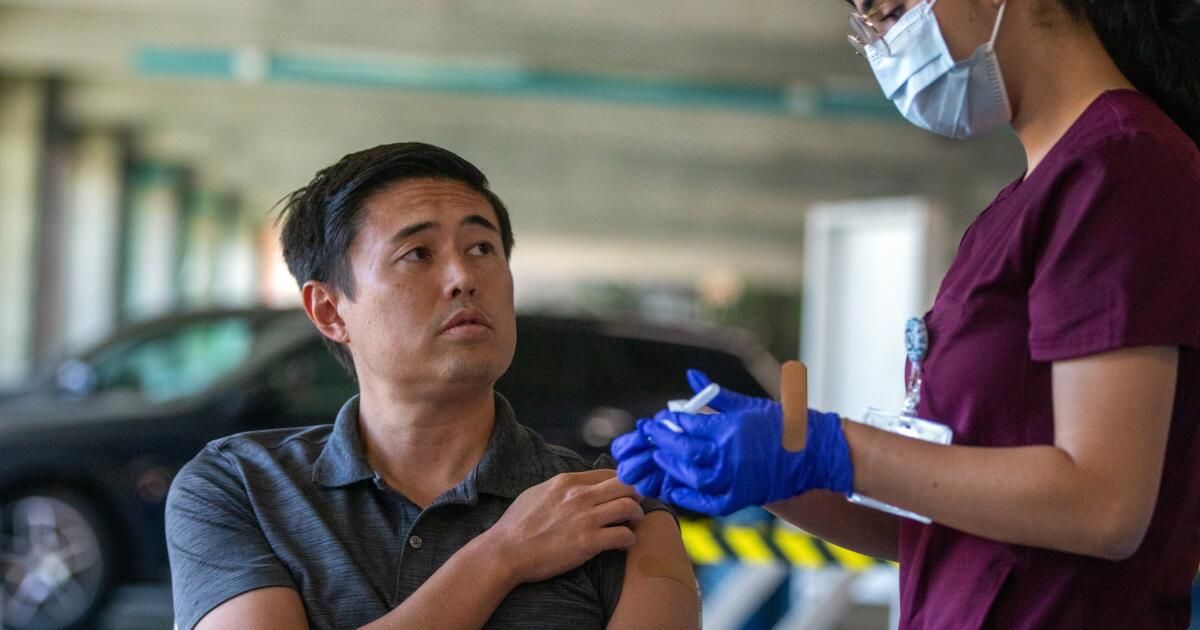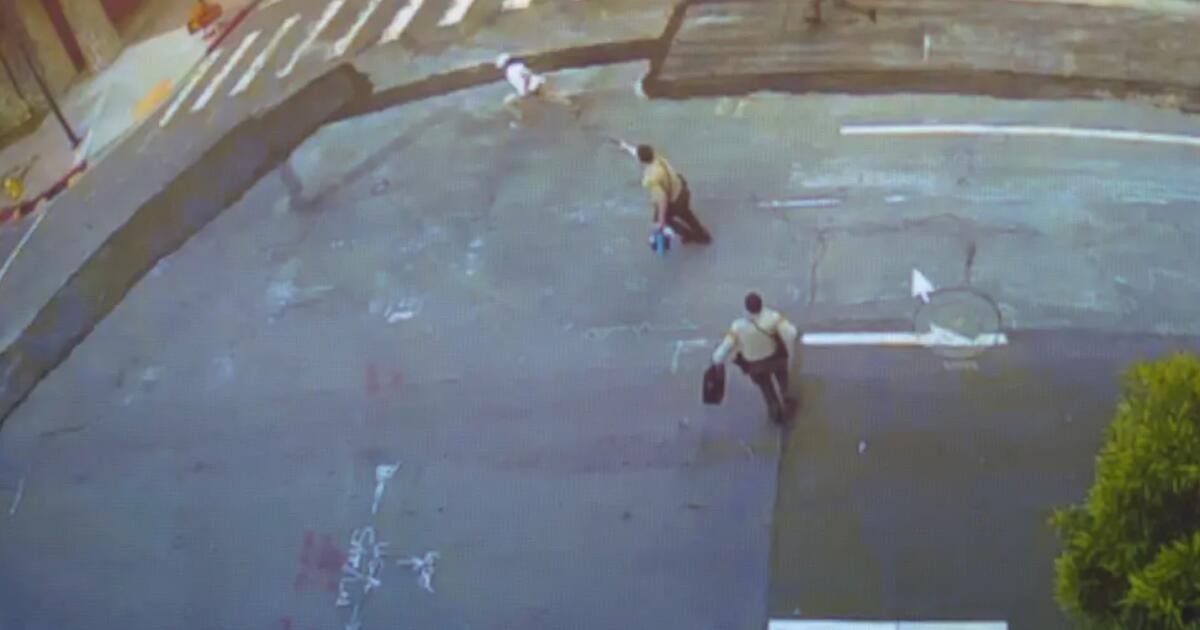Coronavirus levels are high and rising across California amid a post-holiday surge in infections.
The increase, documented through wastewater surveillance, coincides with a sharp increase in flu activity, a double blow for what is turning out to be a busy respiratory virus season.
“We are certainly at high levels of viral transmission. “Flu is one of the biggest drivers of this right now,” state epidemiologist Dr. Erica Pan said at a recent briefing. “We are seeing some increases in COVID-19 activity, especially after holiday season travel and gatherings.”
Around Christmas, the flu was responsible for 4% of weekly emergency room visits statewide, up from about 1% the previous month. COVID-19 was responsible for about 2%, up from about 1%.
During the week ending December 30 in Los Angeles County, the concentration of SARS-CoV-2 in wastewater, the virus that causes COVID-19, reached 60% of last winter's peak, up from reading 49% from the previous week.
Across the state, COVID-19 and flu test positivity rates continue to rise. California continues to show “very high” flu-like activity, including non-flu-related illnesses like COVID-19, according to the U.S. Centers for Disease Control and Prevention.
While COVID-19 no longer exerts the dangerous and devastating pressure seen earlier in the pandemic, it has not been defanged. World Health Organization officials said 10,000 deaths were reported globally from COVID-19 in December, based on data from fewer than 50 countries, mainly in the Americas and Europe.
“Although 10,000 deaths per month is far less than the peak of the pandemic, this level of preventable deaths is not acceptable,” Tedros Adhanom Ghebreyesus, WHO director-general, said at a recent briefing. “We continue to ask people to get vaccinated, get tested, wear masks when necessary, and ensure crowded indoor spaces are well ventilated.”
The CDC reported more than 6,000 COVID-19 deaths nationwide in December, a number that is expected to rise.
Health officials noted that many deaths could have been prevented with higher vaccination rates.
“Vaccines may not prevent infection, but they certainly significantly reduce the chances of being hospitalized or dying,” Dr. Michael Ryan, executive director of WHO's health emergencies program, said at the briefing. “And it really means that those people in vulnerable age groups with underlying conditions… taking advantage of the opportunity to get vaccinated against SARS-CoV-2 and against influenza is the best investment they can make.”
Uptake of COVID and flu vaccines has been lackluster. Statewide, 31% of residents 65 and older have received the updated COVID-19 vaccine since September, Pan said.
In California nursing homes reporting such data, 33% of residents and 10% of staff have received up-to-date COVID-19 vaccines, well below the typical flu vaccine acceptance rate, which It is around 50%.
“This is where we see outbreaks. This is where we have the most deaths and certainly the most hospitalizations,” Pan said.
California is doing worse than other states in terms of vaccinating nursing home residents not only against COVID-19, but also against the flu and respiratory syncytial virus, or RSV, Pan said.
However, health officials are watching closely to see if there are early signs that the winter respiratory viral season may be stabilizing.
In California, there were 3,716 new positive coronavirus hospitalizations during the week through Jan. 6, up from 3,720 the week before, which was the highest number this winter, according to CDC data.
By contrast, last winter peaked at 5,260 positive coronavirus hospitalizations during the week ending Dec. 31, 2022. That was well below the heights seen during the devastating first two winters of the pandemic, when admissions Weekly hospital admissions peaked at more than 14,600.
Nationwide, coronavirus hospitalizations continue to rise. There were 35,801 in the week ending January 6, up 3% from the previous week. Last winter's peak was 44,545, during the last week of 2022.
Of note, while national wastewater data suggests this winter may be generating the highest number of coronavirus infections in a given week since the first wave of Omicron in the winter of 2021-22, hospitalizations have remained lower than in any winter of the COVID-19 era.
“Is this… that we're actually seeing more mild infections in people who don't get tested, report testing, or seek medical care? Or are there other reasons: is there more shedding of the variants currently circulating? Pan said.
Hospitalizations remain high in Los Angeles County, public health officials say. But on Friday, the county moved out of the “medium” COVID-19 hospitalization level and back into the “low” level, according to the CDC. Orange County is still in the middle tier.
The waning impact of COVID-19 has led public health officials in California and Los Angeles County to relax guidelines on isolation time after infection.
“The above isolation recommendations were implemented to reduce the spread of a virus to which the population had little immunity and had caused large numbers of hospitalizations and deaths that overwhelmed our health systems during the pandemic,” the Department of Public Health said. of California in a statement. Tuesday. “We now find ourselves in a different time with reduced impacts of COVID-19 compared to previous years, due to broad immunity to vaccination and/or natural infection and readily available treatments for infected people.”
State and Los Angeles County officials say those who test positive should isolate and stay home only while they have symptoms; They can end isolation once their symptoms are mild and improve and they have been fever-free for 24 hours without using medication. Those who test positive but are asymptomatic do not need to stay home, according to the guidance.
Previous guidance stated that those infected should stay home for at least five days.
Anyone with COVID-19 should wear a mask when around others for 10 days after the onset of symptoms or, if asymptomatic, after testing positive for the first time. Infected people can stop wearing a mask sooner if they test negative in two consecutive rapid tests taken at least one day apart.
Still, anyone who has COVID-19 should stay away from people at higher risk of getting seriously ill for 10 days, officials say. They should speak to a healthcare provider as soon as possible to find out if they may be eligible for treatment, such as a prescription for Paxlovid or another antiviral medication.
The CDC, which last updated its guidelines last spring, still recommends isolating yourself for at least five days after symptoms appear or your first positive test if you don't have symptoms.












